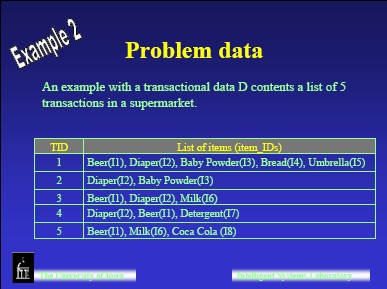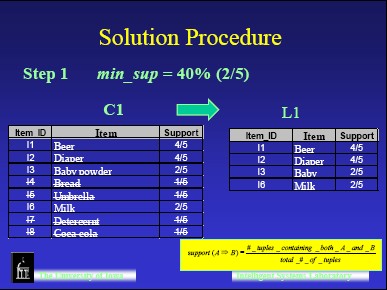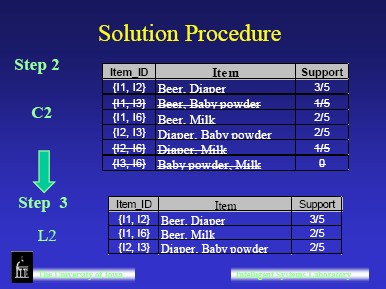| The second example gives a real-world example of an Apriori application. It shows a transactional data D contains a list of 5 transactions in a supermarket. For example, the Transaction 3 includes the purchasing of beer, diaper, and milk together. |

|
From the algorithm Apriori, Lk is the set of large (frequent) k-itemsets and Ck is the set of candidate k-itemsets (or potentially large itemsets).
The support of milk is 2/5 because milk appears in the Transactions 3 and 5 among the five transactions.
|

|
There are six 2-itemsets according to the combination:
4C2 = (4!) / (2!×2!) = 6The support of the itemset {Beer, Diaper} is 3/5 because the itemset appears in the Transactions 1, 3, and 4. |

|
|
Interviewer: Describe yourself in 1 word. Me: Hired. 2nd Interviewer: Can he do that? |
